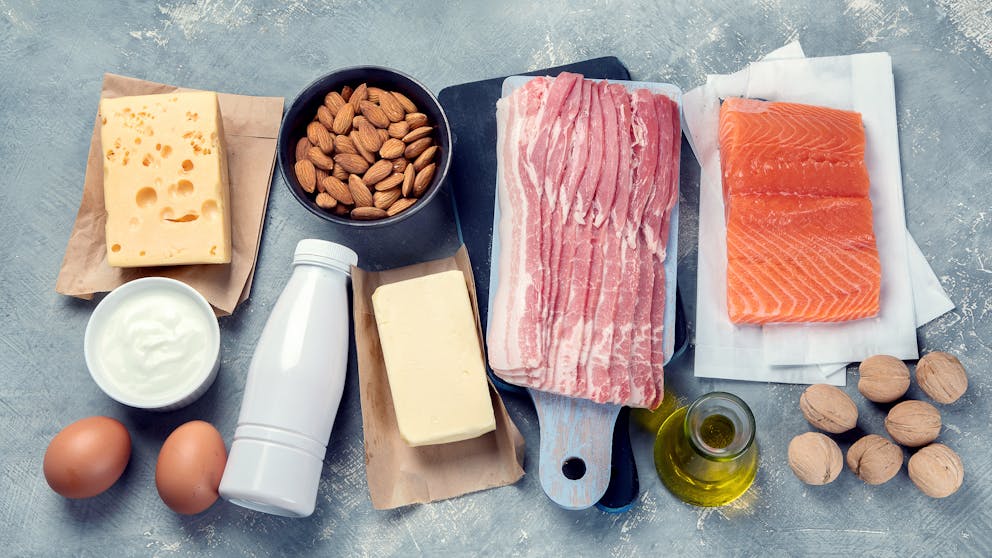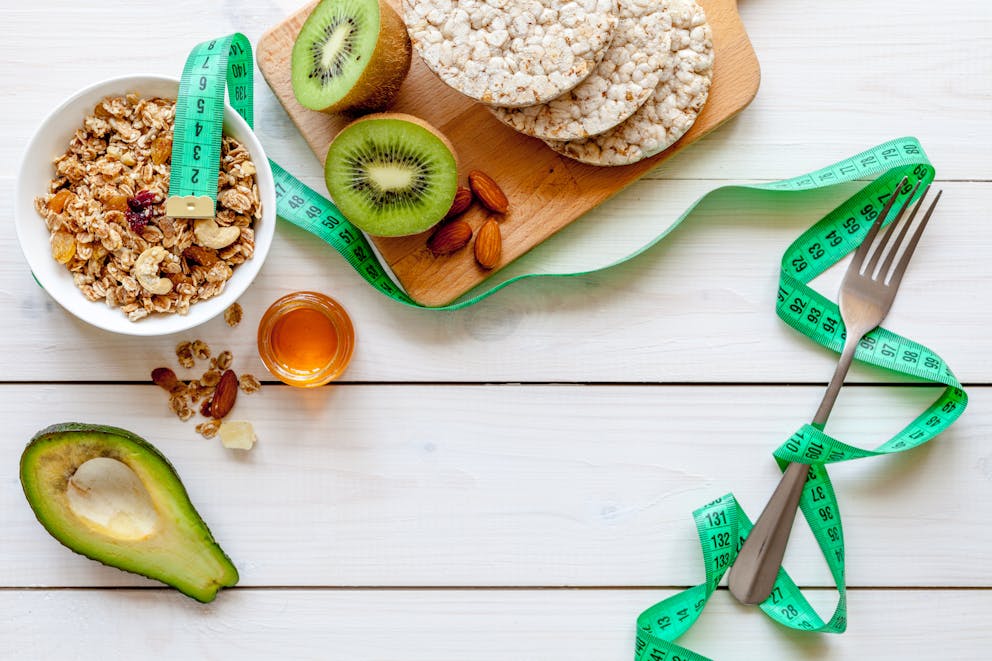Get Your Glucose from Protein and Fat
Imagine, if you will, a world where your body becomes a fine-tuned energy powerhouse. This isn't science fiction; it's the reality for those who've embraced the science of gluconeogenesis.
Gone are the days when carbs ruled supreme as our primary energy source. Now, we're flipping the script and seeing proteins and fats differently.
But how much glucose does your body need? And can you genuinely meet these needs without reaching for that slice of bread or bowl of pasta?
You might be taken aback by what you discover regarding your body's glucose requirements and ability to fulfill them without the typical carb-laden suspects.
With gluconeogenesis, our bodies reveal their incredible adaptability - synthesizing vital glucose from non-carbohydrate sources to keep us humming. It's biochemistry in action, folks!
The human engine doesn't run on magic; it runs on molecules converted into fuel through processes that would astound even the most seasoned chemists.
So, let's explore how this remarkable system supports metabolism and ensures that every cell is fed, especially when dietary carbohydrates take a backseat.
The Science of Gluconeogenesis
Ever wonder how your body keeps chugging along, even when you're cutting back on the carbs? It's all thanks to a little thing called gluconeogenesis.
Let's dive into this life-saving process that keeps our engines running, especially during those low-carb diet phases.
Understanding Gluconeogenesis
Gluconeogenesis sounds fancy, but it’s pretty straightforward when you break it down. It’s our body’s way of ensuring we never run out of fuel. Even when carbs are off the menu, our bodies can whip up glucose from amino acids and glycerol.
Think of it as an internal backup generator that kicks in to keep the lights on and everything else running smoothly.

The Role of Amino Acids and Glycerol
Amino acids and glycerol might not sound like much at first glance, but they’re superstars in energizing us. Here's how they step up:
Amino acids: These guys come mainly from protein breakdown. Not all amino acids get this gig, but those that do turn into glucose heroes inside our liver cells.
Glycerol: This comes from fat breakdown - yes, fats. When we need more glucose, some fats sacrifice their glycerol component for conversion into glucose molecules.
This fantastic ability highlights how versatile and adaptable our metabolism is—able to switch gears based on what we eat (or don't). So next time someone asks if ditching carbs will leave them energy-deprived, tell them about gluconeogenesis.
In essence, gluconeogenesis ensures our blood sugar levels stay stable by turning proteins (from those beans or chicken breasts) and parts of fats into new glucose—that vital source of energy every cell craves.
If diving deep into biochemistry floats your boat, or you're just keen to understand more about optimizing your health through nutrition, knowing about gluconeogenesis is critical.
We've barely scratched the surface here because there's so much more fascinating science behind these processes that power us every day.
Fueling the Body Beyond Carbohydrates
When carbs are off the table, our bodies don't just throw in the towel. When deprived of carbohydrates, our bodies ingeniously seek other energy sources, such as ketones, fatty acids, and lactate, to keep us going.
So, here's the lowdown on the body's ingenuity when carbs are a no-go.
The Versatility of Ketones
Ketones are a big deal. They power 40% to 70% of our bodily functions when glucose is hard to get. And that's not all – most of our brain's energy needs? Yeah, ketones have got that covered, too.
Think about it: with upwards of 70% of your brain running on these little guys during low-carb periods, they're essentially keeping the lights on upstairs. That’s some heavy lifting.
Fatty Acids and Lactate as Alternative Fuels
Fatty Acids: These aren’t just for show; they’re a powerhouse fuel source for your body, too.
Lactate: Often overlooked but equally important, even small amounts can fuel our cells.
We need glucose for certain things—like giving our brains enough juice to function correctly. But when dietary carbs are scarce, only about 30% or less might come from direct glucose sources or lactate conversion.
This blend shows us something pretty cool: Our bodies know how to adapt and effectively use what we give them (or what we don't). So next time you worry about cutting back on those carbs – remember your body has more than one trick up its sleeve.
How Much Glucose Does Your Body Need?
First, how much glucose do we actually need? Surprisingly, not as much as you might think. The magic number hovers around 36 grams per day to keep essential functions running smoothly—especially our brain health.
Our brains are like luxury cars; they prefer high-quality fuel but can adapt when necessary.

Sources of Glucose in a Low-Carb Diet
If you skip the bread basket, you probably wonder where this glucose comes from. Enter gluconeogenesis - the process that lets us make new glucose from non-carb sources like amino acids and glycerol (a component of fats).
So yes, even without carbs, your body finds ways to fuel itself efficiently.
Amino acids from protein and glycerol from fats step up to bat for energy production.
This clever mechanism guarantees that your vitality and mental clarity remain unaffected whether you follow keto or intermittent fasting plans.
To dive deeper into how these processes support metabolism and maintain blood sugar levels, check out this insightful article on Gluconeogenesis by ScienceDirect Topics.
The takeaway is that while whole-grain bread and brown rice dishes might take a backseat in low-carb diets, the human body doesn't just throw in the towel.
Our bodies are incredibly adept at employing intricate biological processes to satisfy cellular energy needs and maintain equilibrium in blood sugar levels. Honestly, it's downright impressive how our bodies can adjust like that.
Carbohydrate-Free Energy and Choosing Between Xanthan Gum vs Guar Gum
Gluconeogenesis offers a unique pathway for the body to produce glucose without relying on carbohydrates, providing sustained energy on low-carb diets.
When it comes to enhancing texture and consistency in keto-friendly recipes, individuals often consider alternatives like xanthan gum vs guar gum.
Both additives serve as effective thickening agents, but xanthan gum tends to create a more elastic texture, while guar gum offers a smoother consistency. Understanding their differences can help tailor recipes to personal preferences and dietary needs.
Conclusion
Embarking on this voyage, we've delved into the nuanced ballet of gluconeogenesis, witnessing our bodies' alchemical prowess as they transmute proteins and fats into the treasured glucose.
This narrative isn't spun from enchantments but rather showcases the incredible biochemical mechanisms that sustain us when carbs are off the table.
This isn't just another diet fad or nutritional buzzword; it's a testament to human adaptability. Our dive revealed that carbs aren't the be-all and end-all for energy.
Instead, with gluconeogenesis at play, amino acids and glycerol become unsung heroes, keeping our engines running smoothly.
The narrative Hollywood spins about AI? Consider this its metabolic equivalent – debunking myths one scientific fact at a time.
With each discovery from today’s exploration—ketones' versatility or fatty acids stepping in as alternative fuels—we’ve seen firsthand how extraordinary our bodies truly are.
Gluconeo-what? More like gluconeo-wow! Dropping this bit of wisdom isn't just about filling you in; it's about equipping you with the tools to steer your health voyage because grasping the energy that propels us is crucial for charting a course to peak well-being.
Gluconeogenesis isn’t merely science; it’s art—a ballet within our cells played out daily. And while carbs may have once been king, today we stand witness to an equally potent force driving us forward: adaptation.
Now armed with insights into this process, we're better positioned than ever to make intelligent health and dietary choices.
It's a testament to the body's remarkable ability to adapt and thrive, even in the face of changing nutritional landscapes.
Previous blog
Diarrhea on the Ketogenic DietTags

Popular
08/21/2024
55.8K views
02/23/2025
46.9K views
11/18/2024
281.5K views
03/18/2024
11/21/2022




